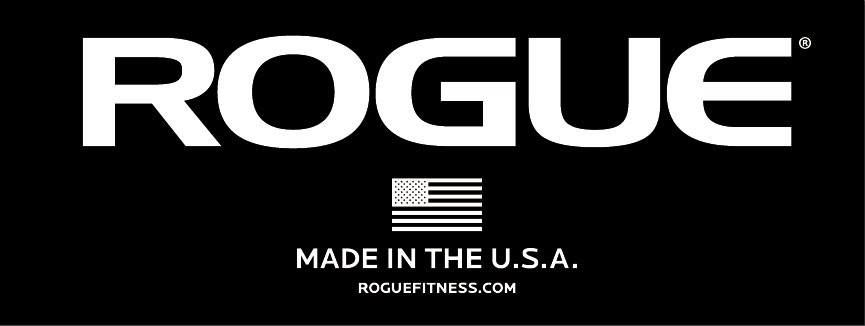Hit The Weights, Jabroni
My gym serves several baseball and softball athletes. I will admit that since I have played baseball, the sheer amount of ball these kids are playing is insane – I have some athletes that will go through their regular spring season, and then play fall ball, and maybe indoor league (those are apparently a thing – I was informed), and maybe travel ball to boot.
So the question I have for these athletes, but mainly their parents and coaches, is this:
“When is your kid training their body for their sport?”
Not be confused with “When is your kid practicing baseball/softball?” – because that answer for the average throwing athlete is, “always and forever.”
The modern strength coach has to deal with athletes that are playing multiple sports year-round, which leaves very little time to actually condition the body – muscles, and tendons, for the forces that will be placed on them in a game situation.
However, for a true multi-sport athlete, the muscles and motor actions in one sport are often dissimilar to the next. For example, a football player that makes a deep playoff run and then goes straight to basketball practice at the end of the season may be using the same muscles, but in a different fashion, and governed by a different primary energy system. There is a lot of jogging in basketball filled with some fast breaks and big plays. In this way, basketball may have a similar impact, physiologically, as something like Soccer.
The big point with multi-sport athletes is that though it may be hard to get them in the weight room, they at least receive a “cross-training” benefit from multiple sports, giving (some) muscles a break, either entirely, or by changing the nature of the muscle action, avoiding an overuse injury. Another example that immediately comes to mind is taking a track runner and having them run the track in reverse – with right turns instead of left, taking the force off their usual inside leg for the benefit of preservation.
The ultimate goal is not to make kids freak lifters, but to enable them to PLAY their sport with greater performance and decreased chance of injury, when it’s time. It does little good to beat up kids, in or out of season, thinking that this magically produces a team or athlete that is ready to go, as opposed to “waiting for an injury.”
Herein lies the ultimate point of this post (let’s go back to baseball and softball, now).
Question:
If an athlete plays the exact same sport year-round, with no actual breaks or off-season, at what point does the athlete become injured from the overuse of specific muscles? – primarily, high velocity-high force throwing and hitting (though I am especially hung up on throwing).
I do not explicitly dissuade any of the throwing athletes from being on the field 24/7 365, however, I do have a little elevator pitch to get them thinking about long-term performance. Most ballplayers have college aspirations; too many of them get Tommy John surgery, torn labrums, and rotator cuffs before ever finishing their high school career.
My pitch (no pun intended) goes like this:
Coach: “How long have you been playing baseball?”
Athlete: “10 years”
Coach: “Right. After 10 years, the nature of good throwing and hitting has not changed a whole lot. You are a master of your sport skill. You bat above .400 and you throw hard. You have very few technical issues with your game.”
Athlete: *drooling, checking phone
Coach: “The problem is, because you are a good pitcher, because you are a good hitter, but not having trained your muscles to withstand high forces at high velocities, you will eventually produce a force, either in throwing or hitting the ball, that your body- muscles and tendons, will not be able to sustain without injury.”
It is prudent to think in extreme terms to drive the point home. If I take up mixed martial arts as a beginner, having never taken a punch, I am going to bruise up easily. Contrarily, if my body has been given time to gradually adapt to high-force impact, I bruise less.
Without a true off-season involving some heavy lifting, that is high force and low velocity training, and thoughtfully sequenced periods of high force-high velocity training, an athletic injury is simply a matter of when, not if. Nobody is getting out unscathed without proper training.
You may hobble across the finish line at the end of your career, having avoided any surgery to find that a year later, the once asymptomatic, torn labrum in your throwing arm is now bothering you.
Without getting deep into the weeds on training modalities, volume, intensity, etc., I will simply lay out an umbrella philosophy that can be equally applied to any athlete, not just baseball and softball players, for off-season training.
Youth Athletes– I am thinking of any who are under the age of 15. For the sake of argument, these are all year-round ballplayers who, unfortunately, have specialized early in their sport.
Young athletes are like sponges. With close to zero weight room experience, just about anything will produce results. Lifting heavy weight will make youth athletes not only stronger and more coordinated, but also enable them to run faster, even without explicit speed training. Again, heavy lifting produces high force at safe velocities. For this age group, that is nearly enough. If you have any basic resistance training program in place for your youth that focuses on adequate range of motion and increasingly heavy loads as perfect technique permits, you are ahead of 99% of your competition.
High School Athletes-
For a high school junior or senior, having long ago specialized in their sport, the training must become slightly more nuanced to avoid injury, as well as improve performance. Here, athletes must train their throwing motion at both low velocities, which enable safer use of high(er) forces than occur during a regular pitch, and, if possible, at speeds higher than they could produce with a regular baseball. For example – a baseball weighs approximately 5 1/4 oz: train with both a 6 oz ball and a 4 oz ball. Greater force in the former, and greater velocity in the latter.
I would be in dereliction of duty as a strength coach for not expanding upon the previous paragraph. This concept of lighter than/heavier than training is tied to a concept called “dynamic correspondence” (DC). In a nutshell, DC refers to the carryover effect that weight training has on specific performance, and can be determined by similarities in exercise and sporting action, such as joint-specific angle and velocity, muscles involved, and primary energy system used.
The younger the athlete, the less a particular exercise matters for improving sport performance; have your 12-14 year old do pushups, goblet squats, rows, and I promise they will see an objective performance improvement when they hit the field.
As the athlete ages and improves in technical proficiency, that is, their ability to hit and throw – things we do not teach as strength coaches, it is imperative that exercise selection adheres all the more closely to the actual sporting action. In this case, throwing and hitting. For example…
Single leg squatting variations – I am thinking specifically of a SSB split squat. The back leg in a split squat tends to mimic a pitcher’s back leg as he follows through on a pitch.
Medball rotations and throws – rotating and quickly stopping a medball produces forces in similar vectors (that is, force in a specific direction) as a baseball swing. This is important for coordinating the muscle action at the hip with that of the arms, with the torso acting as the intermediary to transfer ground forces all the way up to the shoulders, arms, hands, and then to the bat as it makes contact with a ball.
Pressing – horizontal, overhead, incline: DC involves joint-specific actions. The throwing arm will go through ~180 degrees of angular movement from the wind up to the release in baseball. In order to improve strength at all joint angles that the ball must travel through before release, it is important to train the muscles at these angles as well.
That is just a short list of exercises for the more advanced baseball or softball athlete, but it is easy to see how paying attention to the amount of DC your throwing athletes need as they age can have an impact on their performance.
In closing, to athletes, but I am especially speaking to both parents and sports coaches, remember that if an athlete plays any single sport year-round without any supportive resistance training, they will eventually get injured. Things are rarely black and white with sports injury, but anecdotally, I see dozens of kids every year that break down from overuse in throwing sports, and then they can’t throw without pain or hit a ball out of the infield, as a result.
Take some time to train at low velocities with heavy weights. Allow your athletes to produce greater forces than they would in a game, with the added benefit that the motions are slow and controlled, limiting injury potential. Only when the athlete can sustain high forces at low velocities will they be able to safely attempt to produce high forces at game speeds.
Keep your athletes safe, and give them a healthy career that extends beyond the next double-header or tournament weekend.
This requires they get in the weight room and TRAIN!
TJ Gerking – Private sector Strength & Conditioning Coach based in central Indiana. MS Exercise Physiology. Previous experience at the NCAA-DI & DII level with 20+ varsity sports. Writing about resistance training, sprinting, and anything sports performance.
https://musclesglasses.substack.com/p/all-ball-and-no-training-makes-you





